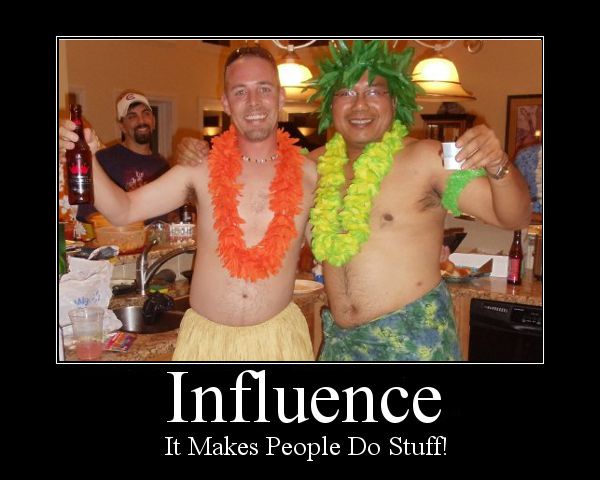
It takes less than a single minute to find somebody willing to write a blog for under $10 per article. There are thousands of writers begging for business. Not unlike the phenomena that anybody with a camera can be a photographer, it seems that anybody with a computer is an eloquent writer. That’s fine, but with such a low cost to have a blog, it is easy to confuse cost with value.
What is the value of a blog article? There are obviously some variables, right? Do you know the variables, and do you value them appropriately? Some important considerations are the time or money to produce the article, its usefulness to the public, the accuracy and experience of the writer, and the longevity of its circulation. These are easy factors for many people to overlook, and can inspire a lot of confusion about the value of a blog.
When you consider your business efforts, we can all surely agree it is important to stop doing things that do not benefit the company. Doing things that cost the company more than they benefit the company is popular, and we see it every day. When done in enough volume, that kind of math will break even the biggest bank account.
Whether the benefit you seek from a blog is improved customer relations, brand awareness, attracting investors, increased sales, or otherwise; if you spend more money on blogging than its potential benefit, then it is time to stop it! This means blogging is worth some evaluation and serious consideration of the downsides, weighed with the potential benefits. Many companies fail to consider the benefits, and so there should be little wonder why some companies still do not have a blog.
I have written about good reasons to blog, and it is not filled with a bunch of talk about making money, but it does address the importance of value. Many bloggers will agree that it is important to give more value than we take. That absolutely does not mean to imply we should give more value than we receive … and there is the confusing part.
Providing more value than you take is just as simple as providing value. If somebody receives benefit from it, and you have not taken anything from them, except perhaps an email address, you have met this value objective. You gave more than you took, as it should be. At the same time, you have added potential for your own benefit. At least it should happen that way.
Value of a Blog Article From a Longevity Perspective
Many of the best blog articles remain useful for years, and it is why smart bloggers keep them around in a blog archive. Some people like to assume the latest is the greatest, but this is very often not the case at all.
I spend a lot of time preparing each of my blog articles, but I also expect them to perform very well for a long time. It would be easier to just whip out my thought of the moment and keep my fingers crossed, but that would not be worth as much to others, or to me.
I value the average article on my blog at over $10,000. This may sound totally absurd to some people, but only on the surface. If you look a little closer, it makes sense. Of course, the exact amount is between me, some taxation fellas, and my wife. The exact dollar value I place on a blog post is irrelevant for this example, but I’ll explain.
I should add that this is about business blogs, and not blogs about where your family spent their holiday. This is also about blogs, like most, that do not charge a subscription fee.
Subscribe by Email or RSS
or ![]() Subscribe in a reader.
Subscribe in a reader.
In my instance, the math is easier, because I have been here on this Internet a long time, but each of us must begin somewhere. On this particular blog, this is the 77th article I have written in 2011, and the 334th since I re-purposed it in 2008. If I did not believe what I have written in 2011 is worth a minimum return of $770,000 ($10,000 each), I would not have done it. It took a lot of effort, a lot of time, and a lot of experience.
Here’s the part where people often get confused: That’s not just to say these 77 articles of 2011 will yield an immediate return on investment of $770,000 … but they will.
Consider how I look at this. There is an article I wrote about H1 tags on another of my websites. H1 tags are in the programming code of a website, and they are a web page heading. The topic relates directly to my industry, and most people who search for and find that article have an actual need for my services. That particular article has been there for over 10 years, and still consistently receives over 2,000 unique visitors per month from search engines.
Another instance is a little piece I wrote about screen resolution. I wrote an article explaining screen resolution, and also a handy javascript to help users open their website in a browser at different sizes to see how it may look to others. That particular piece receives well over 3,000 visitors per month … every month … for over ten years!
In a more recent instance, I wrote an article titled “How Much Does SEO Cost?” is The Wrong Question. I wrote that one in February 2011, and in the past week alone, I have received enough telephone calls from people who found that article by searching “how much does SEO cost” that I wrote new business proposals totaling over $50,000. Yes, just as a direct result of that single article … this week alone.
These are just a tiny sample to consider, but what about the many other hundreds like them which support them? They are not so shabby either, and each one provides value to readers, and also returns a value to me. Looking at it like this, doesn’t it begin to make sense what the value of an article may become, over time?
I count on each and every article on my blog to return its cost in multiples, and they do. Sometimes the exact dollar value is not obvious at the time you publish something, but if you are doing it well, the value will become clear, in time.
To answer my opening question of “Can You Value Each Blog Post at $10,000?”, my answer is yes! I believe you can, too, if you give it the appropriate effort, usefulness, and longevity.
Blogs Provide Compounded Value
We surely all heard how popular the Internet has become. When it comes to blogging, there is value on top of value. Aside from the value to me as a blog owner, the value to any given subscriber is often far greater than $10,000 if they implement the experience I share freely … even if they don’t pay me a penny. I feel really good about that!
Although many businesses may think of blogs as a burden, or that they must only be for purely altruistic purposes, they are an excellent source of additional business. This holds true for nearly any type of industry. For example, in my job role, this blog is the primary way people get to know what I do, and to discover if they want to hire my services.
Some people who believe that blogs are only for giving away free information and that nobody ever actually receives any business benefit from them may hate me for valuing this article at over $10,000. Some may even think I am evil or conniving for seeking a profit from my hard work. In their mind, it should just be about providing information for free … you know, like it’s a hobby.
I believe in giving away a lot for free, but the fact is that most people cannot implement everything I know by themselves. After all, I do this professionally, day in and day out, and I have done so for many years. Some of those few who do not know everything there is to know about online marketing call me to help them. The value to me of that minuscule few who do become customers is more than $10,000 per instance. So, again … my answer is an emphatic “Yes!”
What about you? Do you think a blog is an altruistic burden? How do you value a blog article? Go ahead … add your thoughts to my blog.
More Valuable Articles About Blogging
Just one more thing, before you go: Here are some articles about blogging that I think you may find interesting and useful. It will not zap your brain and render it useless to read them, either. In fact, you may find that they are significantly useful to you. At least read the titles before you decide. 😉
- 10 Really Good Reasons to Blog
- The Biggest Blog Failure Ever
- How to Make a Blog Popular: Consider Your Intent!
- Is Your Blog Sending Mixed Messages?
- New vs. Returning Users: How Readership Churn Counts in The Static Age
- Blogging Tip: Use Your Experience and Blog What You Know
- If Your Blog Was a Sales Rep, Who Would it Be?
- Twitter is Useful but Blogging is Better
- Bloggers Love Comments, But Sometimes No Comment Means You’re Right!
- Benefits of Blogging You May Have Overlooked
Podcast: Play in new window | Download




















